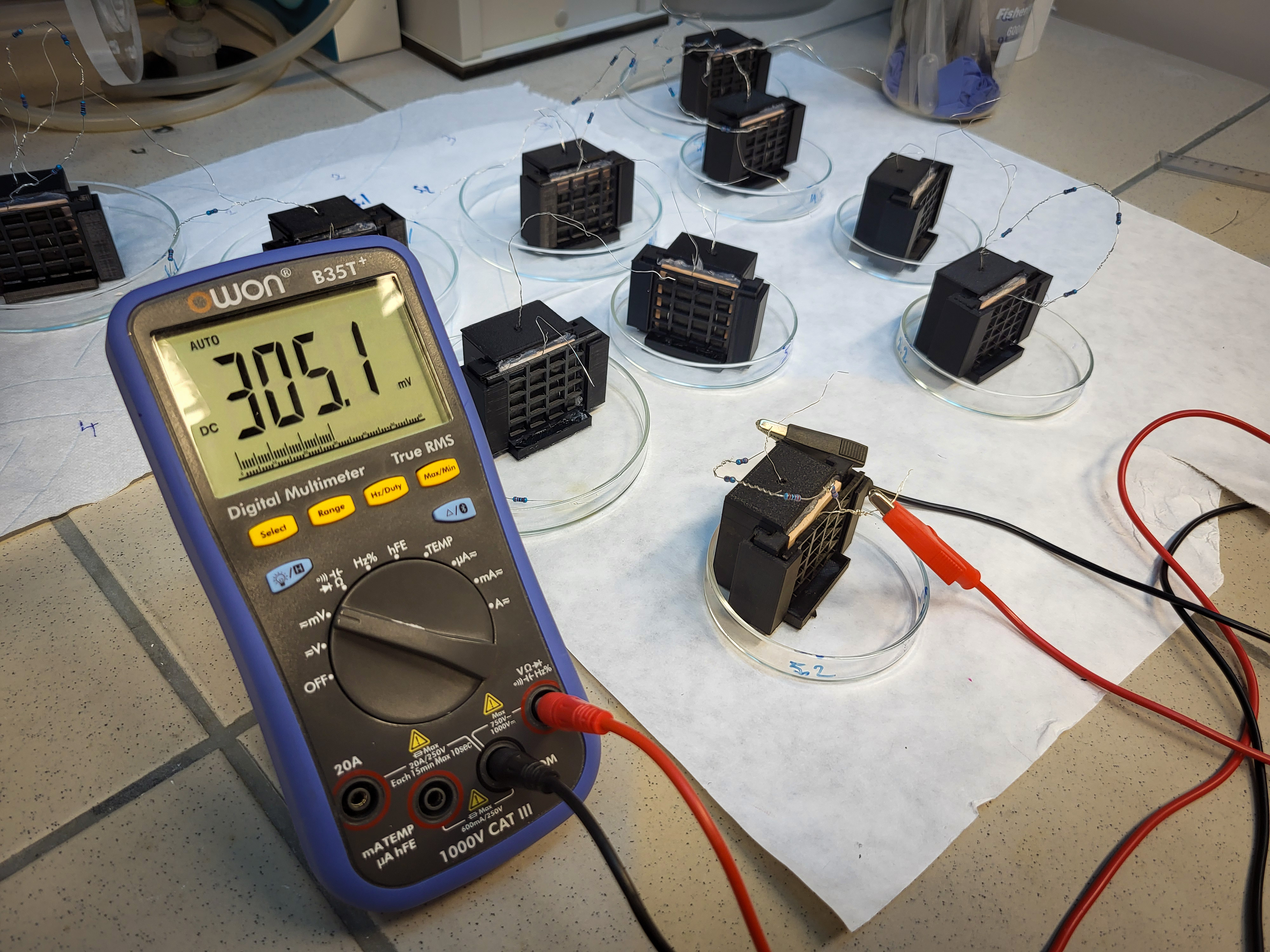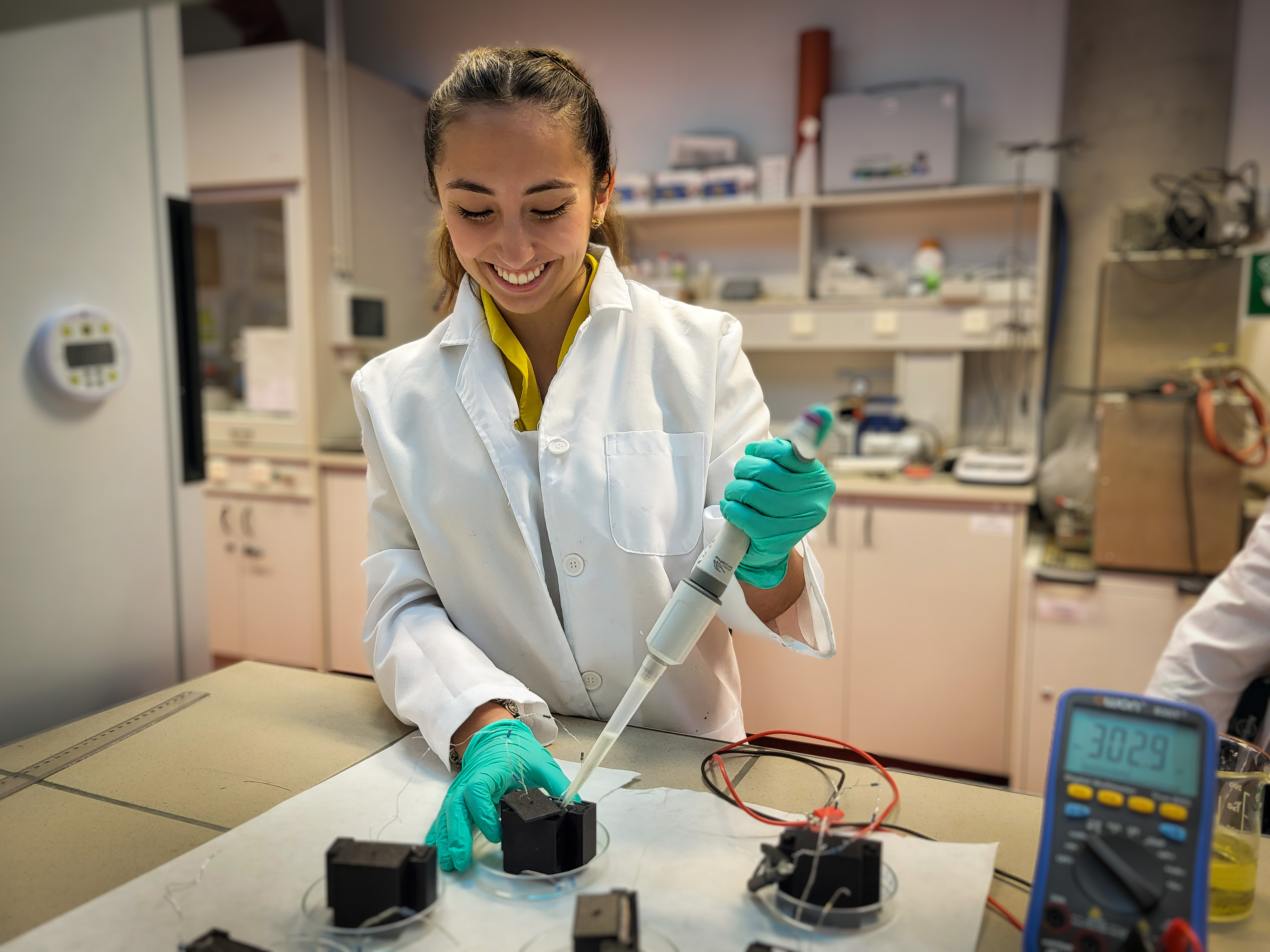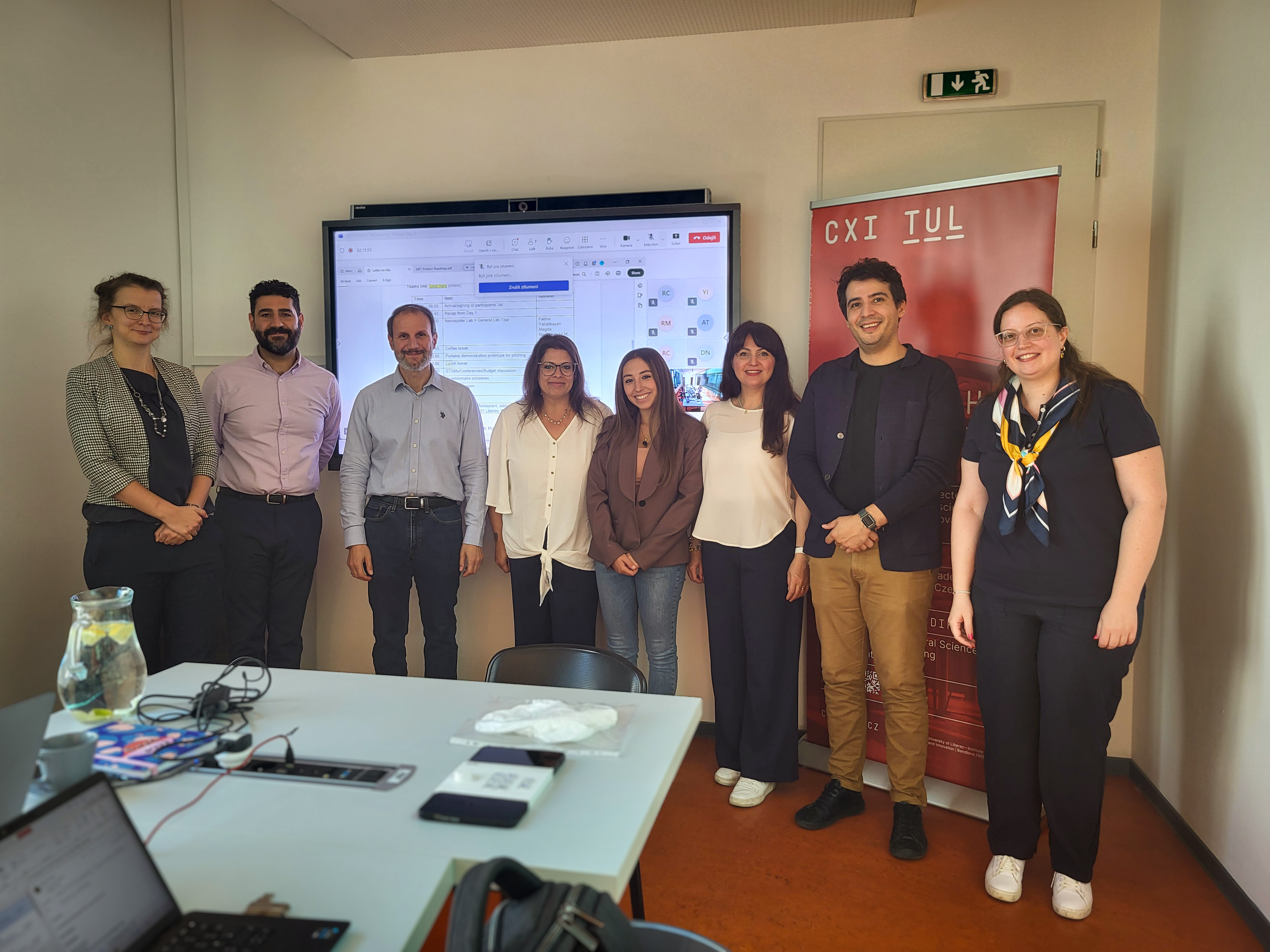Pee Power® heads for market: Top researchers just met in Liberec
12. 6. 2025
It’s one thing to invent a technology that turns urine into electricity in a petri dish. It’s another to get it out of the lab and into the hands of people who need it most. That’s why leading scientists from across Europe came to Liberec in June to accelerate the commercialisation of microbial fuel cells (MFCs), a clean technology better known as Pee Power®.
European scientists turn urine into an energy source
To most of us, urine is just something to flush away. But researcher Fatma Yalçınkaya sees it differently. Urine contains lots of carbon compounds that is exactly the kind of stuff that microorganisms love to break down. Fatma joined to the team of researchers from across Europe optimize a simple microbial fuel cell Pee Power® where bacteria feed on the carbon in urine and release electrons as a by-product. Those electrons? They’re electricity. Enough electricity to charge a phone.
These bio-electrochemical systems use the energy in carbon stored in organic matter, like urine, wastewater, or even leachate from landfills and, generally, any organic waste that is too wet to burn. Instead of needing fuel or fire, MFCs use bacteria to break down waste and generate electricity in the process. No smoke, no noise, no grid required. It tackles energy sourcing, reduction of the load on sewage systems, fertilization, and sustainability, all at once.

No Grid, No Problem: Powering the Unreachable
As microbial fuel cells are low-energy systems themselves, it means they’re perfect for off-grid areas, especially in developing countries where over a billion people still lack access to basic electricity. And Pee Power® addresses those problems perfectly. In areas without light at night, this lack of infrastructure becomes a real danger. Toilets equipped with MFCs power LED lights, keeping women and children safe at night. At the same time, they allow charging and power low-voltage devices.
Beyond Electricity: Energy and Fertiliser in One Cycle
Urine is also a great source of nitrogen, which is extremely important for plant growth and photosynthesis. Pee Power® doesn’t just generate energy; it cleans wastewater and creates usable outputs like fertiliser.
And while Pee Power® might start at the toilet, its implications are far-reaching. It proves that clean energy can be local, renewable, and affordable. That waste can become a resource.
Liberec Became the Hub for European Clean Tech
From 11th to 13th June 2025, Liberec became the epicentre of this revolution. The 4th Product Meeting of the COST Innovators’ Grant IG19123 Microbial Electrochemical Technologies Commercialisation (MET-C) brought together Europe’s leading minds in the field.
Face-to-face discussions were held among representatives from University of Southampton, University of Cyprus, Wrocław University of Science and Technology and CXI TUL.

From Research to Real-World Impact
This meeting wasn’t just about presentations; it was about prototypes. Together, Ms. Daniela Zertuche Moreno from the University of Southampton and Dr. Fatma Yalçınkaya from CXI TUL displayed newly developed microbial fuel cell units.
Pee Power® can be considered as the first MFC pre-commercial prototype that has been developed for field use and focuses specifically on direct electricity generation from MFCs fed with human urine.

Pee Power® Goes Strategic
This Innovators’ Grant will, for the first time, support the development of a business plan for Pee Power® as a bioelectricity generator product. University of Southampton's Pee Power® technology can be considered as the initial MFC pre-commercial prototype that has been developed for field use and focuses specifically on direct electricity generation from MFCs fed with human urine. The project is remarkable collaboration of European experts, includes bioelectricity generator product (Southampton), advanced energy harvesting, AI and telemetry optimisation (Sapienza and Lyon), new material development (Liberec), and microbial formulations (Cyprus and Wroclaw), led by the University of Southampton enhanced manufacturing capability at scale and appropriate market sector deployment. Monitoring and evaluation (Turkey and Portugal), geographical fit (Croatia), microbial/bioremediation performance (Surrey, CNR), and toxicant removal will also form part of the long-term implementation strategy.
CXI TUL plays a key role in the project, focusing on the development of new membrane materials for microbial fuel cell (MFC) components.
What would you do now with Urine?
It’s a provocative question and that’s exactly the point. If we’re serious about sustainability, circular economy, and making use of every resource, then maybe it’s time we start seeing bodily waste as something more than something to flush.







.png)
.jpeg)
.png)
.jpeg)
.png)
.jpeg)
.png)


.png)